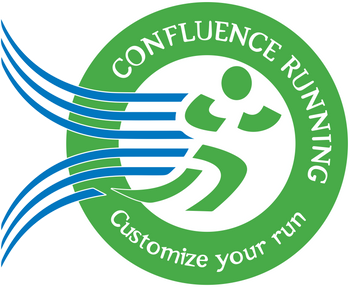So you got fitted: now what? | How to keep going strong after the shoes are not so new.
By now, most of our readers know the benefits of the shoe fitting by a certified Dynamic Footwear Specialist. If you don’t, we’ll leave it at “Yes, it’s absolutely worth it!” But what do you do after those shoes are not so new? How do you know when your shoes need to be replaced? Hint: looking at the bottom of your shoe won’t tell you. Here are three rules to keep your feet happy and running strong, even after those shoes seem like they’re no longer perfect.
 Chloe Peer fitting Run 4 Downtown director & runner Dave Madden
Chloe Peer fitting Run 4 Downtown director & runner Dave Madden
Rule #1: Reasonable Shoe Mileage
It’s always worth keeping track of how old your shoes are. Whether you run with an app where you can track which shoe you wore and it spits out mileage, or you prefer to just “wing it” with estimations based on how long you’ve owned the shoe; running shoes have a limited lifespan and need to be treated accordingly.
Whether you’ve had them for a month or for a year, a pair of high-quality running shoes are not intended to last as long as you might think* and lower quality shoes give you less time—sometimes less than a month before they lose support!
What should you do if you’re not sure if your shoes are no longer supporting you correctly? While turning them over to look at the bottom will give you some information about your stride and your wear patterns, generally a shoe that’s no longer providing much support can still look “perfectly fine” on the outsole rubber. The functional support comes from the foam midsole which is what breaks down over time (whether it’s worn or not, but more quickly if you wear it). Guess what: If you’re an orthotic wearer, you’re likely to break down that midsole unevenly, slowly rotating your orthotic until it’s no longer functioning the way your doctor intended. No bueno.
*“300-500 miles” includes walking miles, so a good rule is not to use your current running shoes for just “kicking around” in. You’ll wear them out more quickly and not get as much run time in them, leaving yourself open to injury. While it may seem counterintuitive, standing or walking all day actually keeps the foam compressed for more time than running for only your daily run.
Best advice: When you’re not sure if your shoe is getting too old, get yourself a new pair. Rotate between the old pair and new pair and it’ll become pretty clear when your older pair loses bounce and cushion. This will ensure that you get the full mileage out of the old pair, while not accidentally taking it past it’s limits. This should always be the first thing to consider when you start getting a niggling pain creeping in - how old are your shoes? If they’re getting close to the 300-500 mile range, it’s time to add a new pair to the rotation. Often that’ll solve that nagging ache before it gets bad enough to sideline you.
Rule #2: Rotating models of shoes
We know: you have your perfect shoe and you never need any other model ever! Bad news: they change them every year, so hang on to your hat and sadness-proof your running by getting yourself multiple models of shoes. According to a study from Luxembourg, runners who rotated through 3-4 shoe different models of shoes throughout their training had a 39% decrease in injury rates. While this sounds ludicrous to most runners who have married themselves to a specific brand and model, the idea is that each shoe keeps a runner in a specific movement pattern which can allow some muscles to weaken while others become over-used. This can lead to long term imbalances which leave runners open to injury if they, say, start training for that “next level.” A simple solution is to alternate between multiple models of the same category of support. That is, if you’ve been fitted to a neutral, mid-cushion shoe, try to find another neutral, mid-cushion option such as the similar model from a different brand. So for instance, if you love the Brooks Ghost, consider trying the Saucony Ride. Alternating between the models is the best plan to keep those legs healthy and feeling good. As a bonus, you’ll have a better idea when each shoe is past it’s prime.
 Jenna Gawors, Dynamic Footwear Specialist
Jenna Gawors, Dynamic Footwear Specialist
Rule #3: Your feet will change with time
Most people assume that once we’ve gotten to adulthood and finished growing, it includes our feet. This, unfortunately is not the case and there are many situations that can cause our feet to change even after our growing years are behind us. Something as simple as a drop in your arch height can change your shoe size as well as the category of support that you need. Weight gain and pregnancy can cause feet to spread, while starting a new lifting routine or going to physical therapy for something like IT Band Syndrome can have the possibility of changing our biomechanics so that our arch functions differently. Beyond that, simple aging can cause the loosening of ligaments and thus some foot spreading and size change. Any of these (and there’s many more possibilities) would mean it’s time to have your foot reassessed for the correct size and type of support needed. Even something as simple as being prescribed an orthotic likely means you need a different type of sneaker.
Best advice: Have a professional take a look once a year at your stride and your foot movement to make sure you’re still on the right track and keep you running long term.
Author: Jenna Gawors, Dynamic Footwear Specialist


